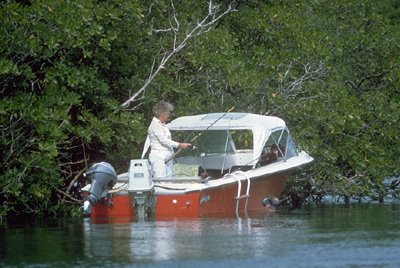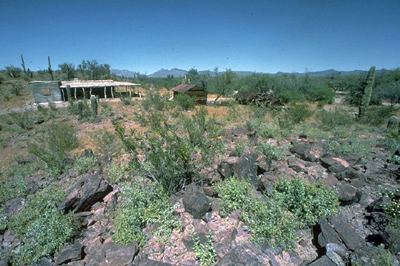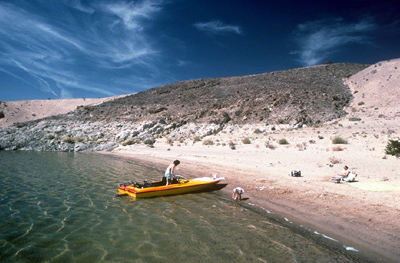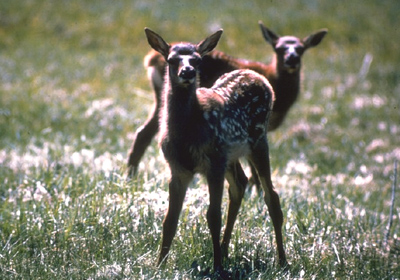
Budget woes reduce patrols, assistance
National parks are found all over the world.
The United States alone has 391 national parks system units, 58 which are parks.
Every year, these parks are visited by millions of people. Each park is located in one of seven regions across the nation and has its own personality considering the climate, staff, location, wildlife, water bodies, mountains and the surrounding environment. This also means that each national park has its own unique crime and safety issues.
 |
Biscayne National Park in southeast Florida where boat collisions are a problem (Photo courtesy of National Park Service). |
Randall Kendrick, trustee and former executive director for the U.S. Park Rangers Lodge of Fraternal Order of Police, said that parks have far fewer rangers than they did four to six years ago.
“The lack of back-up, the time they take is in hours, rather than minutes,” said Kendrick about the response time to emergency calls.
Crime is minimal in some parks, remote ones such as Denali National Park and Preserve, which is located in Central Alaska.
“Most of the crime that occurs is with concessionaires,” said Kris Fister, Denali National Park and Preserve public affairs officer. “Occasionally, people who leave their lost and found items on the bus are ripped off by concession employees.”
Those who visit Denali need to be aware of the environmental conditions of the park, including snow and ice, which contributes to its biggest safety issue.
“Probably our biggest safety issue is vehicle accidents with both visitors and employees,” said Fister.
Since some park areas of the U.S. are bordered by neighboring Canada and Mexico, some issues are more concentrated around those areas.
“We control almost about 10 percent of the Canadian border,” said Kendrick. “The big areas with a lot of crime are around the Mexican border.”
Organ Pipe Cactus National Monument located in southwest Arizona, was rated the most dangerous national park for the second year in a row according to National Park Service rangers in the last survey administered by the U.S. Park Rangers Lodge of the Fraternal Order of Police.
Fred Patton, chief ranger at Organ Pipe Cactus, laughed when asked about the park’s biggest safety issue. The park which covers more than 330,000 acres, encounters illegal activity, undocumented aliens and smuggling, because of the 30-mile border it shares with Mexico.
Of the thousands of illegal aliens who enter the U.S. through the park, many have a criminal history and come armed. There is an impact on resources as those who enter the park leave trash and human waste.
“Some may actually pose a threat to the public,” said Patton.
In August 2002, 28-year-old park ranger Kris Eggle was shot and killed while on duty at Organ Pipe Cactus.
“If rangers themselves aren’t safe, then visitors aren’t safe,” said Kendrick.
Some parts of the park are closed off to the public in an effort to remove them from any potential contact with smugglers and undocumented aliens. To manage the activities, they always have law enforcement officers monitoring the park.
“Twenty-four hours a day in just about every location of the park,” said Patton of the law enforcement.
|
Organ Pipe Cactus National Monument Park in southwest Arizona (Photo courtesy of National Park Service). |
 |
On daily basis, Organ Pipe Cactus National Monument stays in close contact with high level Washington offices such as the Department of Homeland Security.
“We run very specific operations everyday,” said Patton.
The problems are directly confronted by making arrests, seizing narcotics and pushing undocumented aliens back across the border.
Biscayne National Park in South Florida has notable crime and safety issues as it was ranked the sixth-most dangerous park by the last survey conducted by the National Park Rangers Lodge of Fraternal Order of Police.
Some people who go boating in the national park are not properly trained. This sometimes contributes to the boat collisions and drowning since people choose to not wear a lifejacket.
“Among many, I believe that our boating safety is certainly a large concern,” said Steve Clark, chief ranger at Biscayne National Park.
Major crimes at Biscayne include human and drug trafficking, and poaching animals such as fish and lobster. Vehicles that are stolen outside of the park are often dumped into the canal.
“We do have assaults from time to time out on the bay,” said Patton mentioning other crimes.
Although there are active patrols who conduct stops in an effort to control crime, Patton believes that the crime will continue to grow since more people are moving to the area.
“Law enforcement is dwindling as opposed to getting more,” said Patton.
Last year’s fifth-most visited park was Lake Mead National Recreation Area, which is located east of Las Vegas on the Nevada-Arizona border.
“What really upsets me is when people look at apples and oranges,” said Roxanne Day, a public affairs officer at Lake Mead National Recreation Area. “When you are looking at stats, you have to consider the population.”
This area, which was home to almost eight million visitors last year, has a problem with visitors drowning. Lake Mead and Lake Mohave, which are both in the park, cover 550 miles and 250 miles of shoreline respectively. It is mainly young men who drown because they feel that can handle the waters.
 |
Lake Mead National Recreation Area (Photo courtesy of National Park Service). |
“We have about 23 to 25 fatalities a year in our park,” said Day, while emphasizing the amount people who visited the park last year.
Day shared that in 2006 two people died in motor vehicle accidents and four died of natural causes. There were also two homicides and six boating accidents.
The park is a victim to vandalism and has a team in charge of cleaning up the graffiti throughout the park. Off-road driving is not allowed in the park, but some people continue to break the rules. Teenagers have been found drinking in the national park at night. Gangs have been known to kill someone outside of the park and dump the body in the lake.
Another safety issue regarding visitors relates to wildlife. Visitors often approach wildlife too closely.
“People simply have a hard time believing that the park animals are wild and are capable of very sudden aggressive behavior, especially when being harassed,” said Linda J. Miller, a staff member in the Public Affairs Office in Yellowstone National Park in Northwest Wyoming.
Miller reports that there are very few serious injuries or deaths at Yellowstone.
South of Yellowstone, in Springdale, Utah, visitors need to make sure they carry water with them at all times and continuously apply sunscreen at Zion National Park.
“Well, visitor safety is a big safety issue for us because we are in a desert environment here,” said Ronald Terry, chief of interpretation and visitor services.
Even though drug-related arrests have been made, crime is not a big issue at the park.
| Deer in Yellowstone National Park (Photo courtesy of National Park Service). |  |
“Most of what we have to deal with has to do with traffic stops,” said Terry of the crime at Zion National Park in Utah.
Minimal crime was also reported at Yosemite National Park in Northeast California by park ranger Adrienne Freeman.
“The thing we probably cite most for is speeding and probably things like resource damage,” said Freeman.
Not matter how much crime occurs in each park, one thing is clear: visitors must be prepared to explore safely, no matter what parks they choose to visit.
Know What to Expect
Go to http://www.nps.gov/and search “safety” under the park you want to visit.

Comments are Closed